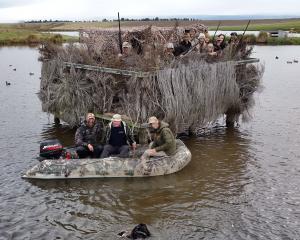
Anna Crosbie has been hired for the job based on a record of working in sector development and innovation across primary industries.
She will oversee the management of its virtual innovation hub.
Innovators and problem solvers with fresh ideas for new strong wool products and novel concepts will be encouraged to make contact with her. They will be supported with expertise and resourcing .
The role follows a review by Wool Impact that identified barriers blocking innovation.
New entrants found it a challenge to speak to the right people and connect to expertise and knowledge to help them.
Chief executive Andy Caughey said they wanted to build an innovation network to grow ideas quickly.
"The idea behind this is to make it easy for them to come to a single point of contact and then we can point them in the right direction to find scientists, research papers, designers, spinners or dyers and the necessary people to help them and bring their product to market."
Wool Impact wants to increase demand for strong wool, particularly from new products and applications, and make the pathway easier for innovators to link with manufacturers.
Another goal was to work with established companies with mature products to help them grow export opportunities.

"If people’s ideas only work on today’s prices then we have to look at a different way to make their product more desirable with a higher price point. Today’s prices are barely sustainable, so we’ve got to find a way of increasing the prices and increasing the desirability of their innovative idea."
He said the innovative direction would make greater use of existing wool research and manufacturing.
Innovators would be linked to brand builders and company specialists in marketing to help their story and point of difference.
Mrs Crosbie’s background included sector development and innovation in the primary industries and regional economic development.
"She has a valuable depth of knowledge there we are going to tap into and she’s also worked extensively on wool-based projects, helping some of the brands we’re working with in their submissions through to the [Sustainable Food and Fibre Futures] fund through government and industry support for their product development or market development. So she’s a wonderful resource," Mr Caughey said.
Mrs Crosbie said the tide was changing for wool and natural fibres.
"However, many brands and innovators need to be connected with the support, guidance, and resources to test and scale their ideas. We’ve got to be agile and resourceful so that people have the support and pathways to get businesses off the ground and really make a difference in the uses and demand for strong wool."
New wool products from non-woven materials had emerged in the domestic market, including home insulation, acoustic panels, furniture, pillows and duvets, as well as health and hygiene products such as nappies and sanitary products.
Mr Caughey said value could be added by creating export products, and the 15% of strong wool developed domestically was expected to grow to 40% in the next five years.















